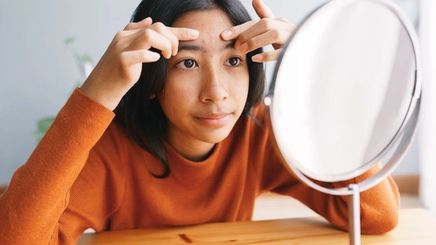
Pigsa can show up anywhere on your skin, but they particularly like areas where hair typically grows, such as the back of your neck, armpits, groin, and face. They can also appear in places that experience a lot of friction, such as your elbows, butt, and thighs. Boils on skin can cause discomfort. However, they usually go away on their own.
Do you notice that you get more pigsa during warmer weather? There’s a reason for that. Read all about boils on skin, from treatment to prevention.
What Are Boils on Skin?
Boils start as infected hair follicles, not unlike folliculitis, which may appear like small boils on skin or . According to Harvard Health, the bacteria Staphylococcus aureus develop pockets in the skin that fill up with pus – a combination of white blood cells, dead skin cells, and more bacteria. Once this happens, you’ll notice a swollen red bump on your skin. As the infection worsens, a cream-colored tip may appear at the center.
If folliculitis is the premature form of a boil, then carbuncles are the more extreme version. These are either extra-large boils or a cluster of boils lumped together through a spread of infection.
is not considered a boil, though they look similar. Both may feature that yellow-white tip. However, boils on skin are from bacteria and can be contagious. It can spread throughout your skin or even to others.
Does Hot Weather Make You More Prone to Boils?
Warm weather itself won’t directly cause more boils on skin. However, sweat can. In the Philippines, humidity is high. You not only perspire more, but your sweat also evaporates more slowly. Because sweat stays longer on your skin, your skin becomes an inviting breeding ground for different bacteria, including those that produce and boils.
Another is dryness and irritation. After all, boils develop after broken skin comes in contact with Staph bacteria. Warmer temperatures also aggravate skin conditions like eczema, another risk factor for boils.
How Can You Avoid Boils on Skin?
is your first defense against these types of bacteria. Wash up well and focus on the grimier and sweatier crevices of your body – also the hairier parts. If you worked out or you know that you had a particularly hot day, shower before going to bed.
Use LIFEBUOY Antibacterial Bodywash Total 10 to cleanse away dirt. It has Activ Silver+, a powerful ingredient that protects you from germs. After all, you wouldn’t want to leave traces of the day’s gunk all over your sheets and blankets. That can cause a myriad of other problems.
Skin Boil Treatments You Can Try
Boils on skin tend to go away on their own. Like , resist the urge to pop them. Broken skin encourages more bacteria and dirt from your hands (or whatever you use to release the pus) could make the infection worse. Popping can also spread the infection to your skin or other people.
If it bursts on its own, clean the wound with antibacterial soap. Patch it up with a bandage to prevent further damage.
For boils that are intact, a warm compress can help reduce swelling. According to the American Academy of Dermatology, you can a warm compress on the affected area three or four times a day, 10 to 15 minutes at a time. Keep the area sanitized and dry.
If the swelling does not subside or is causing considerable pain, consult with a doctor. They may release the pus or prescribe antibiotics.
When you live in a humid country like the Philippines, you might experience boils on skin now and then. If your giant "zit" isn't going away with , have your dermatologist check it – it might be a boil. Thankfully, they’re pretty manageable. Just follow the tips above!